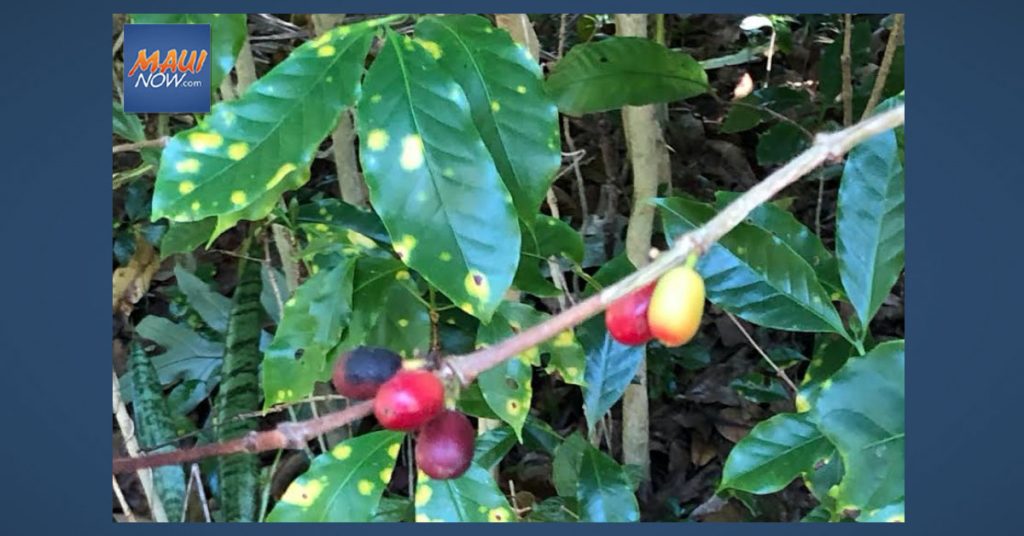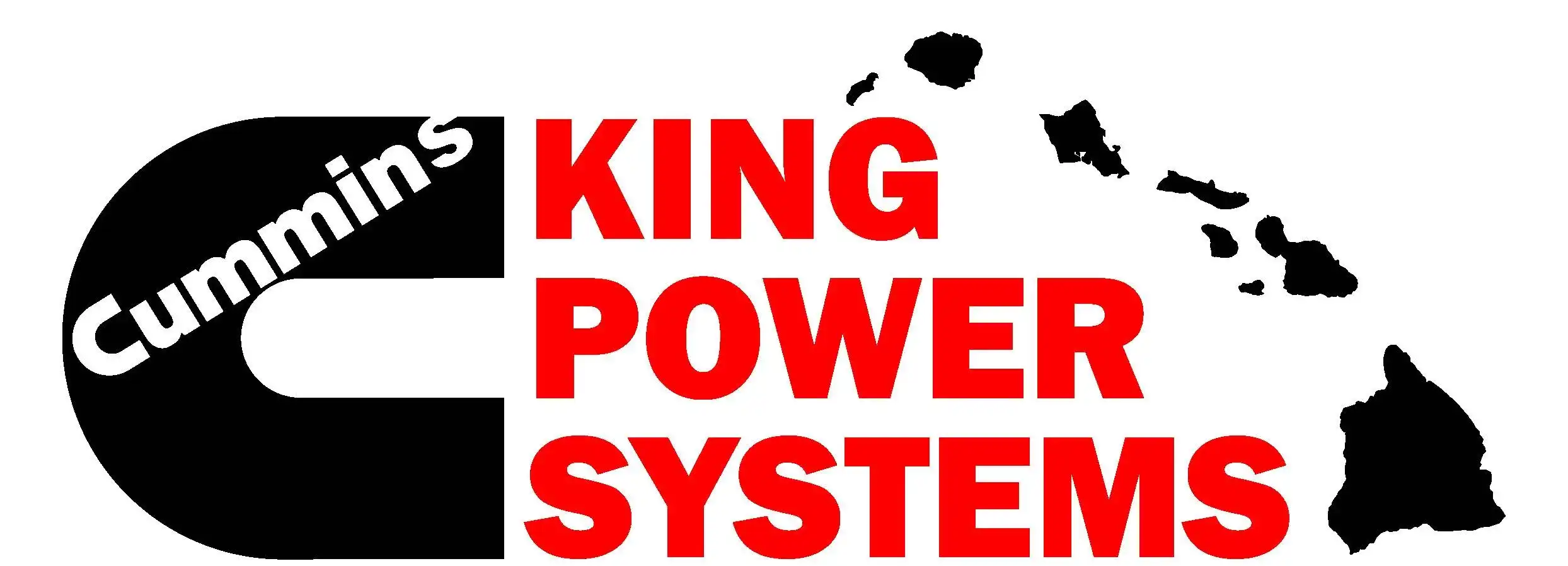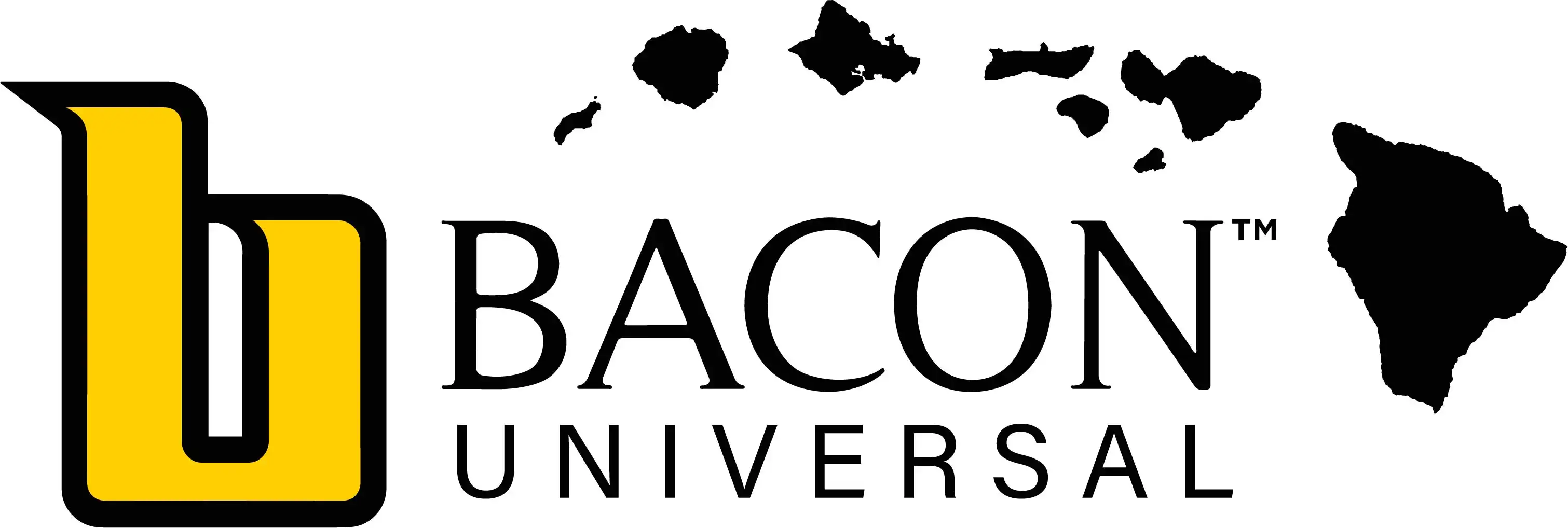EPA Approves Fungicide for Hawai‘i Coffee Growers to Battle Coffee Leaf Rust

The US EPA has approved Hawaiʻi’s request for coffee growers to use a fungicide to control coffee leaf rust in the islands.
The devastating plant pathogen was first detected in Hawaiʻi in October of 2020. Since then, a coordinated effort has gotten underway to protect Hawaiʻi’s $56 million coffee industry.
HDOA was notified of the approval of the emergency exemption for Priaxor® Xemium, which allows the fungicide to be used for up to one year or until use on coffee plants is added to the product label by EPA and the product’s producer.
The fungicide, Priaxor® Xemium, is not currently labeled by the EPA for specific use on coffee plants, but it is allowed for use to control fungi on leafy vegetables, strawberries, tomatoes, soybeans, wheat and many other crops. In March 2021, HDOA filed a request for a specific exemption with the EPA to allow the use of the fungicide on coffee plants.
“Hawaiʻi coffee growers now have an added method to combat the coffee leaf rust which is extremely difficult to manage,” said Phyllis Shimabukuro-Geiser, chairperson of the Hawaiʻi Board of Agriculture. “Other efforts to minimize the damage and spread of coffee leaf rust include quarantines on the movement of coffee plants and associated material, the import of disease-resistant coffee plants and the development of integrated pest management strategies.”
The EPA exemption allows coffee growers to use the fungicide under the following conditions:
- Growers must inform the Pesticides Branch at least seven days prior to using the product by emailing hdoa.sec18@hawaii.gov.
- Personal protective equipment must be worn as required by the label.
- All directions on both the container label, as well as the dealer provided Section 18 label, must be followed.
- All use/application must be reported to HDOA’s Pesticides Branch within 10 days of application.
Growers with questions on the proper use of the fungicide may contact Pesticides Branch staff at:
- Hawaiʻi Island: Cal Westergard – (808) 974-4143
- Maui County: Mitchell MacCluer – (808) 873-3078
- Oʻahu: Adam Yamamoto – (808) 973-9409
- Kauaʻi: Emilee Wedekind-Balualua – (808) 241-7140
In anticipation of EPA’s approval, HDOA and the University of Hawaiʻi’s College of Tropical Agriculture and Human Resources held two webinars for coffee growers in April on the use of Priaxor® Xemium. Two additional webinars are being planned in June.
CLR is a devastating coffee pathogen and was first discovered in Sri Lanka in 1869 and can cause severe defoliation of coffee plants resulting in greatly reduced photosynthetic capacity. Depending on CLR prevalence in a given year, both vegetative and berry growth are greatly reduced. There are multiple long-term impacts of CLR, including dieback, resulting in an impact to the following year’s crop, with estimated losses ranging from 30 percent to 80 percent.
Since the first detection of CLR in Hawaiʻi in October 2020, a multi-agency effort involving HDOA, UH-CTAHR, the USDA Daniel K. Inouye Pacific Basin Agricultural Research Center and the Hawaiʻi coffee industry has been working to protect Hawaiʻi’s coffee industry.









